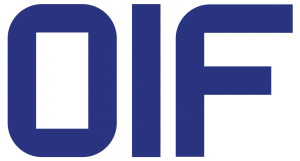OIF Technical Work Continues at Rapid Pace With 400G White Paper, New Implementation Agreements
Continuing a tradition of producing timely, relevant technical work, the members of the Optical Internetworking Forum (OIF) have published a whitepaper that provides the carrier perspective on 400G technology options and its impact on future high-capacity WDM applications. The Forum also approved implementation agreements that outline service provider requirements for Neighbor Discovery and updated specifications for the industry standard Integrable Tunable Laser MSA.
In an effort to bring order and clarity to the race to build 400G transport solutions, the OIF’s 400G whitepaper summarizes the technology options for specific applications such as long-haul, metro and data center interconnect. Entitled “Technology Options for 400G Implementation”, the whitepaper provides a consensus from carriers on the specific system parameters and network requirements needed for 400G to support increased bandwidth demands in optical networks.
“As the industry moves forward towards 400G-transmission speed, it is crucial to have carriers and vendors working together, as was achieved with 100G optical interfaces,” said Karl Gass, of Qorvo and the OIF PLL working group vice-chair, optical. “This whitepaper summarizes the requirements by carriers for specific technology applications, and we expect to start projects to define the best, near term solutions for 400G networks.”
Implementation Agreements Approved
Service providers need to streamline and reduce cost of operating their optical networks; one way is to reduce manual effort by automating link configuration processes. Automating the process of link identification and exchanging the link configuration data is known colloquially as Neighbor Discovery. The ITU-T has defined an architecture and protocol for Neighbor Discovery in G.7714 and G.7714.1, but implementation of the specifications has been limited. The OIF’s “Neighbor Discovery Implementation Agreement 1.0” utilizes ITU-T specifications to support the exchange of:
- Identity of the network element port connected to the far end of the link,
- Data-plane capability of the network element ports on each link end,
- Management-plane details for each link end,
- Control-plane details for each link end.
The resulting specification provides carriers with an interoperable solution complete with use cases, requirements, procedure and protocols conforming to the ITU-T’s specifications.
The OIF continues to build on the industry standard for tunable lasers established by the forum six years ago. The OIF has updated the existing MSA and assembly IA to add the functionality needed for next generation, highly flexible networks.
The Integrable Tunable Laser Assembly MSA (ITLA-MSA 1.3) and Micro – Integrable Tunable Laser Assembly IA (OIF-MicroITLA-01.1) updates add the provision of high resolution registers and raises the protocol version to 3.0.0.
The 400G white paper and implementation agreements can be found here.
About the OIF
The OIF facilitates the development and deployment of interoperable networking solutions and services. Members collaborate to drive Implementation Agreements (IAs) and interoperability demonstrations to accelerate and maximize market adoption of advanced internetworking technologies. OIF work applies to optical and electrical interconnects, optical component and network processing technologies, and to network control and operations including software defined networks and network function virtualization. The OIF actively supports and extends the work of national and international standards bodies. Launched in 1998, the OIF is the only industry group uniting representatives from across the spectrum of networking, including many of the world’s leading service providers, system vendors, component manufacturers, software and testing vendors. Information on the OIF can be found at http://www.oiforum.com.

